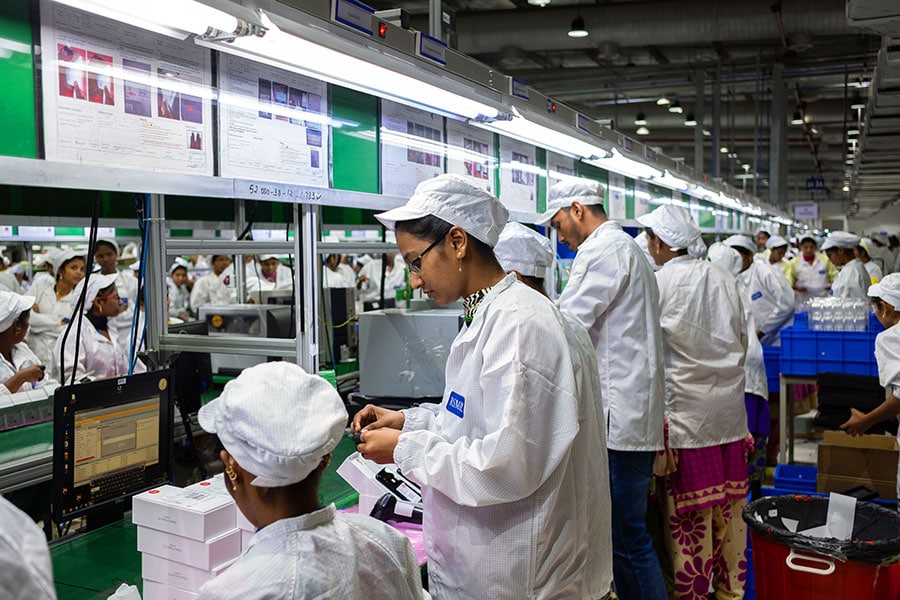
Apple's iPhone exports from India have doubled, but component manufacturing needs to pick up
The US tech giant has come a long way in India, from a delayed launch of iPhones to a parallel launch. Now, to capture more market share, it needs to focus on manufacturing the components domestically
 Employees test mobile phones on an assembly line in the mobile phone plant of Rising Stars Mobile India Pvt., a unit of Foxconn Technology Co., in Sriperumbudur, Tamil Nadu, India. Image: Karen Dias/Bloomberg via Getty Images
Employees test mobile phones on an assembly line in the mobile phone plant of Rising Stars Mobile India Pvt., a unit of Foxconn Technology Co., in Sriperumbudur, Tamil Nadu, India. Image: Karen Dias/Bloomberg via Getty Images
Since 2017, when Apple first started assembling its older version of iPhones in India, there have been many significant developments. The majority of the progress happened last year, following Apple CEO Tim Cook’s India visit in April 2023. Apple’s efforts to branch out its supply chain from China are finally bearing fruit in India. Through its contract manufacturers Foxconn, Pegatron, and Tata-owned Wistron, iPhone exports from the country have multiplied. Exports have reportedly surged from $6.27 billion in the fiscal year 2022–23 to $12.1 billion in 2023–24.
Apple’s market share too has improved after the company’s decision to move its assembly lines here. Apple’s market share in India currently stands at 6.4 percent, up from 4.6 percent in 2022. The company is looking at 8 percent share this year. However, to capture more share and offer the handset at a reasonable price, the Cupertino-based company will have to go beyond just assembling the iPhones here.
“Apple iPhone component manufacturing in India stands at under 9 percent,” an industry insider told Forbes India on condition of anonymity. Things are picking up. All the focus now is on producing components in-house. It took a decade for China to reach where they are, he says. “India is new to the game but is picking up well. It’s worth noting that technology transfer from China is one of the biggest impediments because neither party is granting visas.”
The Tata Group became the first Indian company to make Apple iPhones in India after it acquired a 100 percent stake in Wistron last year. It is also currently in the process of taking over Pegatron’s plant in Tamil Nadu. The Taiwanese firm has done the paperwork with Tata Electronics, and the acquisition is expected to be officially announced very soon, the source confirmed. In December, Pegatron’s assembly factory in China was taken over by Apple’s second-largest iPhone manufacturer, Luxshare. According to a Pegatron filing on the Taipei Exchange, the Chinese contract manufacturer will acquire a 62.5 percent stake in the facility in Shanghai.
Apple has 14 component suppliers in India, as per its 2022 supplier catalogue. In contrast, a bulk of them, 151 out of Apple’s 200 major suppliers, are based in China, which will continue to be its main manufacturing hub. Though the government gave clearance to some Chinese suppliers for operating in India in January, as per news reports, that is currently on hold.








